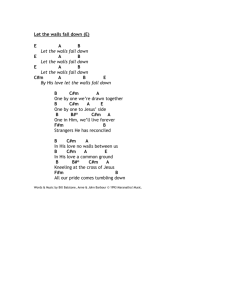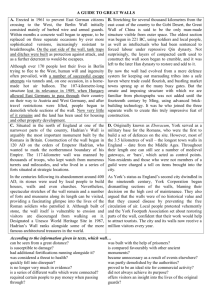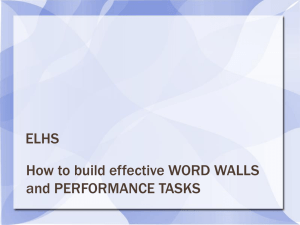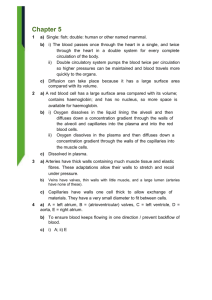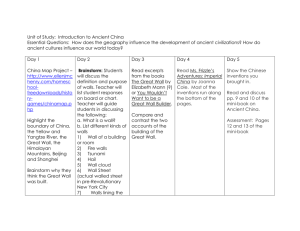48.-Tips-for-Creating-Interactive-Word
advertisement
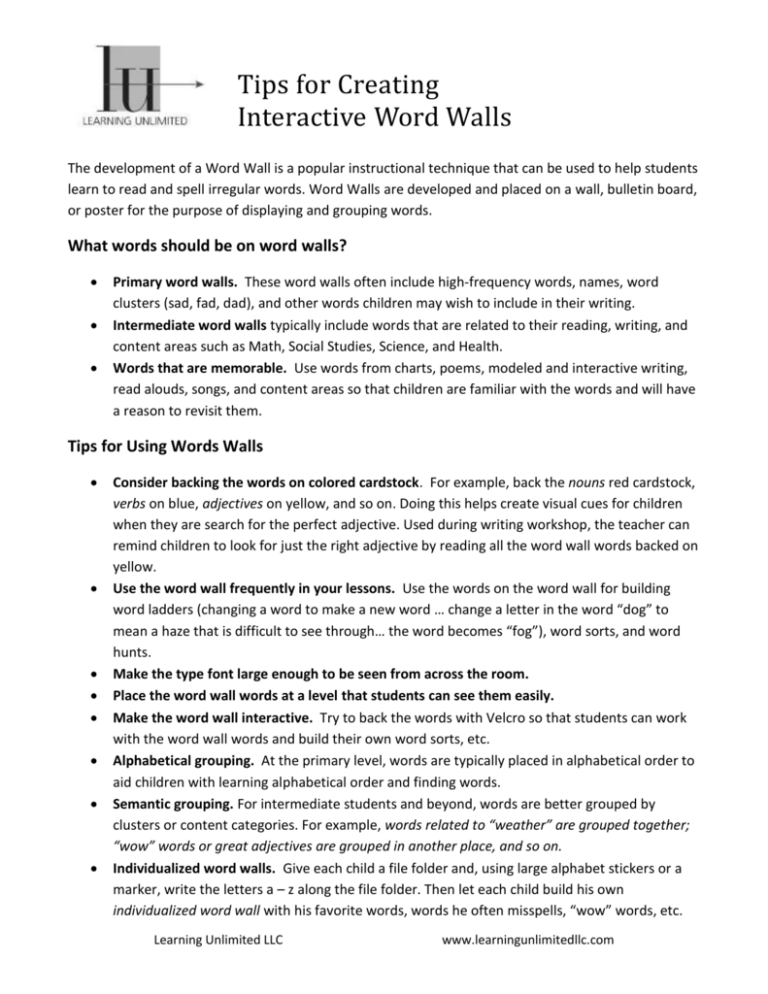
Tips for Creating Interactive Word Walls The development of a Word Wall is a popular instructional technique that can be used to help students learn to read and spell irregular words. Word Walls are developed and placed on a wall, bulletin board, or poster for the purpose of displaying and grouping words. What words should be on word walls? Primary word walls. These word walls often include high-frequency words, names, word clusters (sad, fad, dad), and other words children may wish to include in their writing. Intermediate word walls typically include words that are related to their reading, writing, and content areas such as Math, Social Studies, Science, and Health. Words that are memorable. Use words from charts, poems, modeled and interactive writing, read alouds, songs, and content areas so that children are familiar with the words and will have a reason to revisit them. Tips for Using Words Walls Consider backing the words on colored cardstock. For example, back the nouns red cardstock, verbs on blue, adjectives on yellow, and so on. Doing this helps create visual cues for children when they are search for the perfect adjective. Used during writing workshop, the teacher can remind children to look for just the right adjective by reading all the word wall words backed on yellow. Use the word wall frequently in your lessons. Use the words on the word wall for building word ladders (changing a word to make a new word … change a letter in the word “dog” to mean a haze that is difficult to see through… the word becomes “fog”), word sorts, and word hunts. Make the type font large enough to be seen from across the room. Place the word wall words at a level that students can see them easily. Make the word wall interactive. Try to back the words with Velcro so that students can work with the word wall words and build their own word sorts, etc. Alphabetical grouping. At the primary level, words are typically placed in alphabetical order to aid children with learning alphabetical order and finding words. Semantic grouping. For intermediate students and beyond, words are better grouped by clusters or content categories. For example, words related to “weather” are grouped together; “wow” words or great adjectives are grouped in another place, and so on. Individualized word walls. Give each child a file folder and, using large alphabet stickers or a marker, write the letters a – z along the file folder. Then let each child build his own individualized word wall with his favorite words, words he often misspells, “wow” words, etc. Learning Unlimited LLC www.learningunlimitedllc.com Learning Unlimited LLC www.learningunlimitedllc.com


